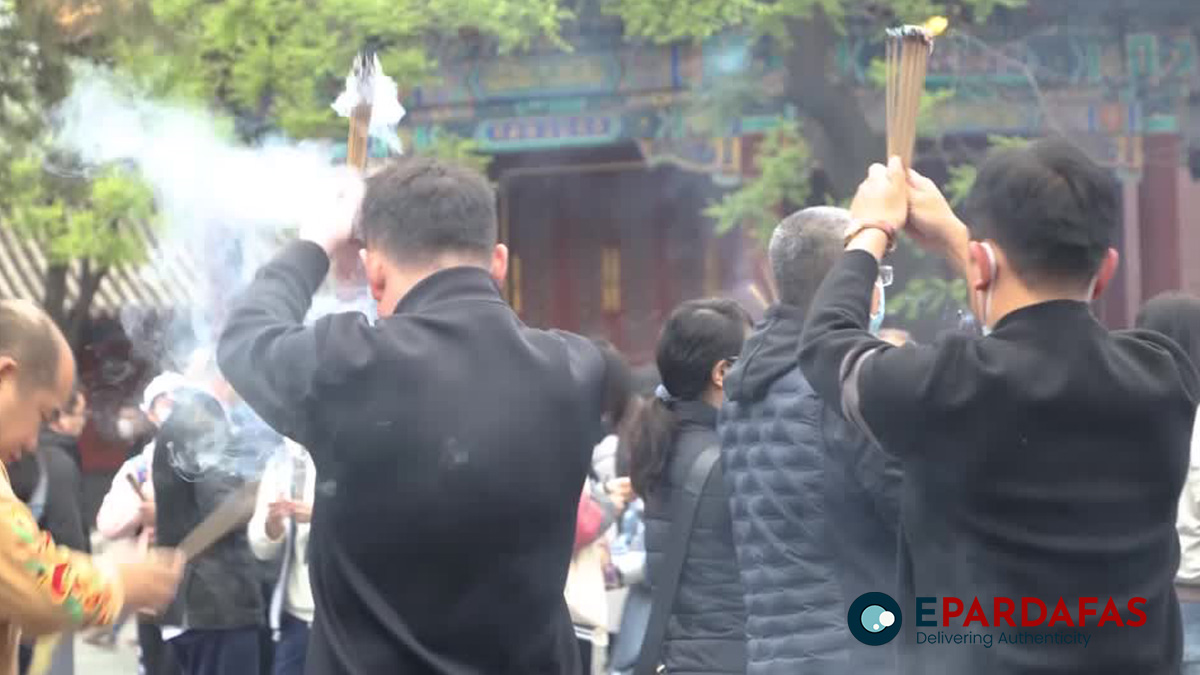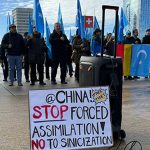
Desperate for jobs, people throng temples for divine intervention in China
China is officially an atheist state, but the government formally recognizes four religions such as Buddhism, Taoism, Christianity, and Islam, giving people a liberty to practice their religion without indulging in ritualism.
But in the post Covid-19 phase and following the lifting of the draconian ‘Zero Covid’ approach, Chinese people, especially youth seem to be in no mood to follow the ruling Communist establishment’s dictates on religion and ritualism.
As rising number of disillusioned Chinese youth, despite having Marxist education and being taught to lead an atheist life, on account of the country’s deteriorating economic health and rising unemployment graph in the country, are thronging Buddhist and Taoist temples with incense sticks in their hands to pray for blessings in securing jobs, getting into good schools, or becoming rich.
According to travel platform Trip.com, bookings for temples witnessed a 310% jump from the start of 2023. On Baidu, China’s prominent search engine, ‘temples’ have been the most searched topic, hitting 586% from January 1 to March 16, 2023. And most of those who search temples on Baidu are young men aged between 18 and 30, South China Morning Post said.
The Hong Kong-based English daily newspaper said temple-hopping has become a “trendy activity” for young people as they are desperate for good jobs and want their life pressures to ease.
As per official statistics, the unemployment rate in China for people between 16 and 24 years old reached a record 20.4% in April, 2023. That means, 6 million young people living in cities and towns are without any job in China, Bloomberg News said.
This would further worsen as millions of new graduates are expected to enter the labor market by June in the country. According to the Chinese Ministry of Education, 11.06 million college students are to graduate in June 2023—an increase of 820,000 from last year.
It means the economy has to perform well to accommodate these graduates. Although the Chinese economy has witnessed 4.5% acceleration in its growth in the first quarter of this year, forecasters say the peak of any recovery might already be past. Ground realities speak the same. Last week, data released by China’s National Bureau of Statics, showed the country’s exports fell 7.5% in May from a year ago as global demand waned.
Factory activity has also declined. Data from China’s National Bureau of Statistics (NBS) shows industrial firms recording a 20.6% fall in profits in January to April from a year earlier. In April alone, as per NBS, industrial firms witnessed a 18.2% decline in profit year-on year. This decline in industrial profits has come on the back of a report, suggesting that local governments in several Chinese provinces are making painful spending cuts or have to divert money from growth-boosting projects to repay their debts.
As a result of such ups and downs that mark the Chinese economy, a sense of insecurity has gripped people in the country. According to The Wall Street Journal, one in five Chinese youth is currently jobless. This has resulted in the rise in visits to temples by youth to seek divine providence for their future and jobs, said South China Morning Post.
Interestingly, among temples, the Lama temple in Beijing is the most visited place. Known also as Yonghe Palace, the Lama temple used to be a part of an imperial palace where two Qing dynasty emperors lived. As per the Hong Kong daily, about 40,000 people have visited this temple per day since March 2023.
Global Times, a leading mouthpiece of the ruling CPC establishment, is also covering such developments, indicating a huge interest that temple visits by youths is generating across the country. As per the tabloid-shaped English daily, in Hangzhou, which lies in China’s Zhejiang province, young people line up outside the Lingying temple as early as 7am in the morning to offer the first incense as it is considered as auspicious and efficacious. Rise in visits to temples by people has also led to increase in sales of souvenirs and incense sticks in the country.
As per the Hong Kong daily, visitors in Beijing alone are spending an average of 200 yuan ($29) to 1000 yuan ($145) buying souvenirs like bead bracelets for good fortune. While souvenirs are usually sold around temples, they are also sold through online platforms like Taobao and Xiaohong Shu.
Along with this, sales in incense sticks have also witnessed a boom. Yongchun county, a village in China’s Fujian province which supplies much of the world’s incense, has reported a return of the pre-Covid era manufacturing activity of aromatic incense sticks. Though there is no official data on it, the Hong Kong daily said more than 30,000 people are working in 12-hour shifts in around 300 manufacturing units in Yongchun County to produce millions of incense sticks per day.
As per the daily, just one incense producing company currently generates more than 15 million incense sticks a day in Yongchun County. Undoubtedly, this would not have happened without a rise in temple visits by youth. In fact, youth are so desperate for jobs that some of them in Beijing and other Chinese cities are bringing their personal belongings like laptops and hard drives to the temples to be blessed, Global Times said.














Comments